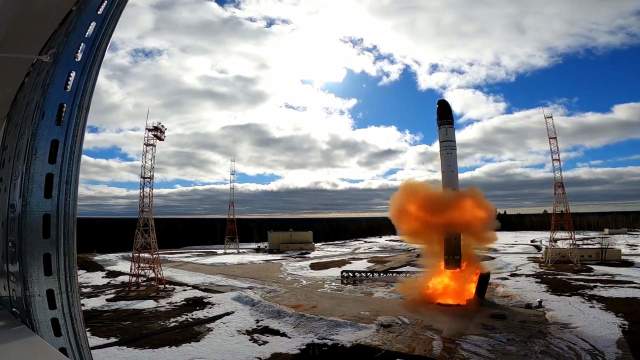When should we expect "Sarmatians" in service and what they are capable ofSerial production of the fifth-generation RS-28 Sarmat intercontinental ballistic missiles has begun in Russia.
This was announced on November 23 by the general director of the Makeev State Rocket Center Vladimir Degtyar. Their characteristics make it possible to overcome even the most advanced defense systems. About the history of the development and testing of a powerful complex that will protect Russia in the next 40-50 years — in the material "Izvestia".
Heavy rocket
"Intercontinental Missile System (ICBM) it has already been put into serial production, provided with the necessary materials and production equipment," Vladimir Degtyar said on November 23.
Earlier it was reported that the serial production of the newest heavy intercontinental rocket with liquid-fueled rocket engines 15A28/RS-28 "Sarmat", created at the Makeev State Research Center, will be deployed at the Krasnoyarsk Machine-Building Plant. It produced space launch vehicles of the Cosmos series and ballistic missiles for Sineva submarines. To assemble the Sarmats, new workshops were built at the plant in advance, where the largest and most powerful combat missiles of our time are assembled and installed in transport and launch containers in perfect cleanliness.
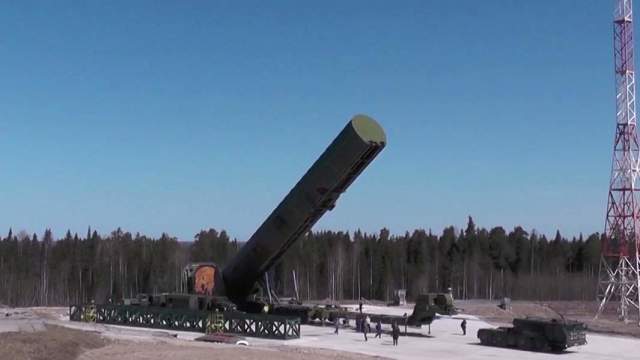
Loading of the Sarmat ballistic missile before launch during testing
Image source: Photo: RIA Novosti/Ministry of Defense of the Russian Federation
The range of the 15A28/RS-28 "Sarmat" along the "classical" trajectories in our hemisphere should be at least 11 thousand km. At such a distance, he will be able to "throw" 10 tons of payload, which includes a combat stage and warheads. But thanks to its power, the Sarmat is able to hit a target along a longer, unusual trajectory through the Southern hemisphere. Potential opponents in that direction do not have missile defense means.
In the "southern" version of the application, the mass of the payload will be less, but it will still allow you to strike with several warheads on each missile. None of the ICBM complexes in service in the world is capable of such a thing.
It is believed that the accuracy of the "Sarmat" should be very high — the size of the allowable miss is unlikely to exceed 150 m. At the same time, the set of thermonuclear warheads is supplemented with a rich set of means of overcoming missile defense in order to deceive any missile defense system.
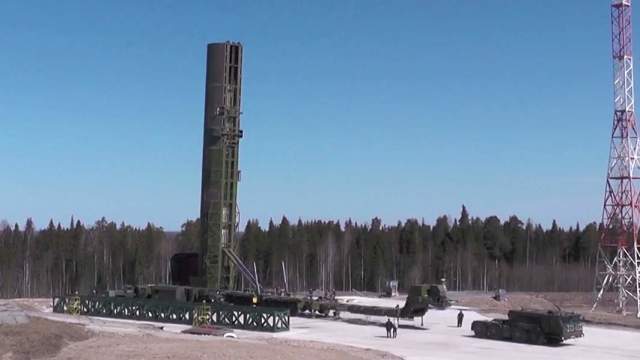
Photo: RIA Novosti/Ministry of Defense of the Russian Federation
Image source: iz.ru
This year, on April 20, the first and immediately successful launch of the heavy Sarmat ICBM was carried out from the launcher at the Yubileynaya site of the missile range in Plesetsk. The missile passed all the points of the route and delivered its deadly load from several combat units to the Kura test site in Kamchatka.
A long project
Work on the Sarmat project began in the late 2000s with the cooperation of Russian rocket design bureaus. It included the Makeev SRC, which had previously been mainly engaged in naval missiles, and the NPO Mashinostroeniya from Reutovo, which conducted work on the topic of "Avangard" with aeroballistic hypersonic combat equipment of its own UR-100NUTTH intercontinental missiles. The competencies of the specialists of these design bureaus successfully complemented each other.
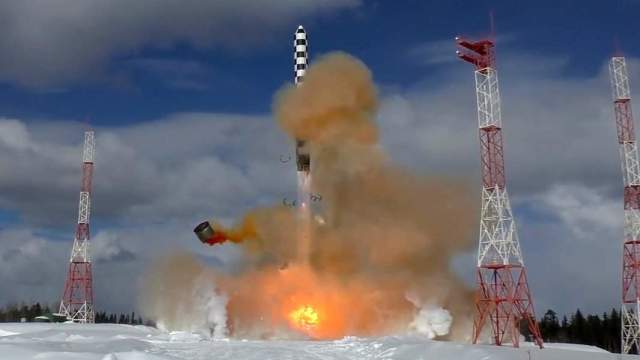
Launch of a heavy intercontinental ballistic missile "Sarmat" from the Plesetsk cosmodrome in the Arkhangelsk region
Image source: Photo: RIA Novosti/Ministry of Defense of the Russian Federation
From the very beginning of the project, the new missile was developed as a future potential replacement for the heavy strategic R-36M2 "Voevoda" in service with the Russian Strategic Missile Forces, developed in the late 1980s by the Yuzhnoye Design Bureau from Ukrainian Dnepropetrovsk. These ICBMs, known abroad under the designation "Satan", were regularly extended their service life, but until the early 2020s it was necessary to make a decision about their future fate.
In 2012, a large scientific and technical council was held on the new Sarmat heavy missile, and in the same year the Russian Defense Ministry approved the preliminary design of the missile. Its full-scale development has begun. Finally, in 2014, it became clear that some kind of positive interaction with Ukrainian developers would not work and the "Voivodes" would have to be decommissioned in the early 2020s. The Sarmat creation program has received an impetus for its accelerated development.
In 2015, the assembly of prototypes of the rocket for carrying out throw launches and testing the production technology of such a large product began. The peculiarity of the new missile was that it was completely Russian and the domestic industry had not previously created such large military products. It was necessary to master new production technologies and the unique body of a heavy ICBM, and the propulsion system, and the control system.
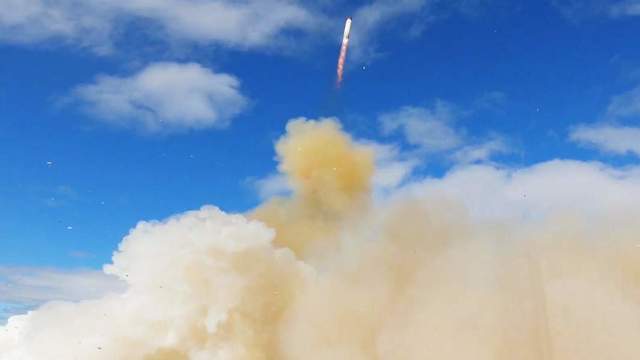
Photo: RIA Novosti/Ministry of Defense of the Russian Federation
Image source: iz.ru
In 2017-2018, the first rapid launches of prototypes took place. They were carried out at the Plesetsk training ground. They tested the launch of a rocket, the operation of a powder pressure accumulator, which gently pushes the rocket out of the silo launcher to a height of 30 m. The launch of the main engines of the first stage and the first tens of seconds of the rocket control system were also checked. The rocket took off, lay down on the route and then, after turning off the engines, fell in a deserted exclusion zone.
In recent years, all ground-based missile systems and most of the missiles themselves have been tested. Next, the turn was for the flight tests of the Sarmat, without which it cannot be put into service. The first of them was completed successfully, but the novelty still has a whole cycle of test launches.
Near-term plans
November 18, 2022 Commander-in-Chief of the Strategic Missile Forces (RVSN) Sergey Karakaev said that the first launch demonstrated the success of flight tests of the Sarmat missile system. The plans announced earlier by President Vladimir Putin to put the first Sarmatian launchers on combat duty in December 2022 have been confirmed.

Russian President Vladimir Putin watches the test launch of the Sarmat intercontinental ballistic missile via video link
Image source: Photo: RIA Novosti/Mikhail Klimentyev
The deployment of the Sarmat ICBM group instead of the Voivodes will only begin this year and will last at least three to five years. The new missiles will be put into service in Uzhur in the south of the Krasnoyarsk Territory and in Dombarovsky near Orenburg. At least 50 mine launchers will be equipped for them. By the way, the autumn satellite images in the Google Earth service show the high readiness of the launchers in the first missile regiment of the missile compound in Uzhur to receive two missiles.
Over the next three to five years, Sarmat should fully complete its flight tests and receive several variants of combat equipment: classic with free-flying combat units (similar to the combat equipment of Voivod) and promising with hypersonic guided combat units from NPO Mashinostroenie. The latter will not be able to hit any missile defense today.
In the hypersonic version, the flight of the combat units is carried out along a low trajectory. At cosmic speed, it flies along the boundary of the atmosphere with the ability to perform maneuvers both in height and direction. They will be able to detect such ammunition much later than a conventional ballistic one, and it is almost impossible to hit it due to maneuvering. None of the existing or prospective missile defense systems is ready to resist the "Sarmatians".
Dmitry Kornev
